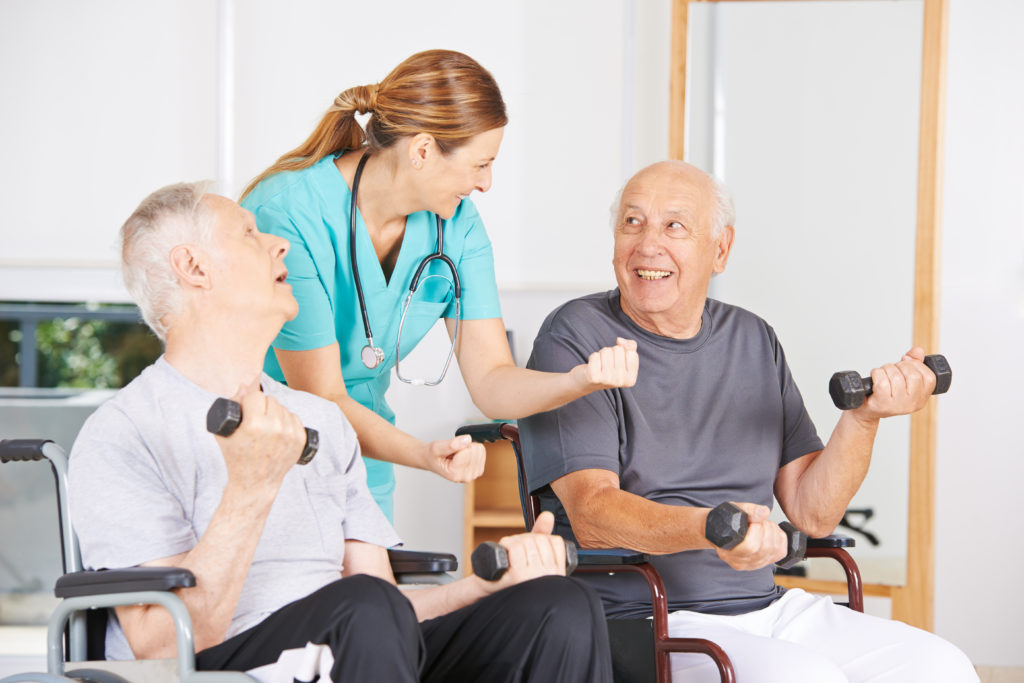It is never too late for physical Training
According to a new study it is never to late to Sport or more activity and movement to begin with. Even in a sophisticated age, exercise can reduce unwanted weight and life expectancy increase. The positive effects on people, which only begin in the late age with the Sport, comparable to those of the life-long training.
Scientists at the National Cancer Institute and the Newcastle University discovered in their recent study that exercise contributes also in the upscale age to many positive effects. The doctors published the results of their study in the English journal “JAMA Network Open”.

Health benefits are removed in the course of time
If people started in middle age with sportive Training, this led to the same risk of premature death, as in the case of people who trained their entire life. Despite a later start to the sporting activities, were Affected the same health benefits as long been training people, explain the experts. The people in the age from 40 to 61 years, which led to the recommended weekly number of activities had according to the doctors, a 16-to 43 percent lower early risk of death. If people were in the early adulthood, passionate sportsmen, but not more active in sports goods, lost them all through the Sport acquired health benefits.
How much physical activity is recommended?
National guidelines for aerobic physical activity recommend that adults should spend at least 150 minutes per week of moderate intensity aerobic activity or 75 minutes per week of intense activity or an equivalent combination thereof, say the scientists. The level of physical activity, which corresponds to the Reach of this guideline, has been associated with significant health benefits, including the reduction of the total causes, cardiovascular disease, and cancer-related mortality.
Benefits of life expectancy by physical activity
Most of the evidence for the benefits of mortality by physical activity, however, come from studies in which leisure-time physical activity only to a certain point, was measured, usually in mid-life, for example, at the age of 40 to 60 years. There is little known about how physical activity and exercise in leisure time from adolescence to early adulthood and in middle age the mortality in the long term, can affect, explain the authors of the study. The scientists hypothesized that part would have participants with the highest activity level in all age groups, the lowest mortality risk. In the prospective cohort study data of more than 315.000 subjects were evaluated. Of these subjects, nearly three-fifths (58.2 per cent) were men. Participants were at the time of their enrollment in age from 50 to 71 years.
Subjects were categorized into different groups
The researchers categorized the subjects into different groups. Subjects, which had in the course of time, a constant higher or more stable periods of leisure-time physical activity, accounted for a share of 56.1 per cent, respectively, 176.654 subjects. A second group consisted of patients who increased their leisure-time physical activity in adolescence or later in adulthood. This group consisted of 41.193 subjects (13.1%). Finally, there were subjects in whom the leisure-time physical activity in early adulthood may be more pronounced, the activity decreased, however, in later adulthood. Included in this group 97.212 subjects (30.8 percent). During the study, there were over 71,000 deaths, of which 22.219 deaths were cardiovascular diseases and other 16.388 deaths to cancer.
It is always worthwhile to increase the physical activity
The increase in the leisure-time physical activity in adulthood after long periods of inactivity during adolescence is associated with a reduced risk of premature death, explain the scientists. Adults increased in age from 40 to 61 years, their leisure-time physical activity had a risk of mortality, which was comparable with the risk of premature death in people who their entire adult age consistently had participated in physical activities in leisure time. These results show that adults were later in life, physically active had a similar mortality rate as life-long athletes, and the greatest Benefit of the earlier activities (adolescence or early adulthood) was lost if activity was not maintained. The scientists had expected that part to show the participants that were taken during the entire adult age, the highest activity levels, the lowest risk. Therefore, they were surprised that a later increase in activity with comparable benefits. (as)



